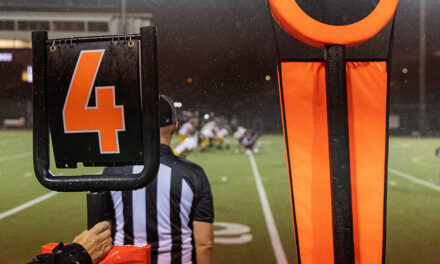High school athletic directors hold the unique position of being the bridge between the school’s athletic programs and the community at large. Engaging parents and the community not just as spectators, but as active participants in the sports culture, requires thoughtful, deliberate communication strategies that resonate on a deeper level.
Personalized Engagement
Tailoring messages to specific groups within the community can dramatically increase engagement. For parents, updates might focus on their child’s progress, upcoming opportunities for involvement, and highlights of their contributions to the team. Community communications might emphasize the broader impact of the sports program on local youth development and community pride. Personalization makes stakeholders feel directly addressed and valued, fostering a deeper connection to the program.
Personalizing communication fosters a sense of belonging and recognition among all involved in the sports program. For student-athletes, receiving accolades for their hard work and achievements can boost morale and drive. Similarly, recognizing parent volunteers and community sponsors in communications highlights their essential contributions, encouraging continued support and participation. This strategy of tailoring messages ensures that every segment of the sports community sees their unique role and impact, reinforcing their importance to the program’s success and cultivating a more cohesive, engaged community atmosphere.
Highlighting Individual And Team Achievements
Regularly showcasing the accomplishments of student-athletes and teams serves multiple purposes. It not only recognizes the hard work and dedication of the athletes but also instills pride in the community and motivates ongoing support. Whether through social media shout-outs, local media features, or special recognition events, celebrating these achievements underscores the collective effort behind individual and team successes.
Highlighting achievements through diverse platforms ensures widespread recognition, reaching community members in spaces they frequent and value. This visibility fosters a strong sense of local identity and unity, as achievements become shared points of pride. Furthermore, it serves as an inspiration to younger students, igniting aspirations to participate and excel in sports. Such celebrations create a narrative of excellence and perseverance, weaving the athletic program into the community’s fabric and enhancing the overall spirit and engagement of all stakeholders.
Creating Opportunities For Involvement
Engagement deepens when stakeholders have the chance to contribute. This could be through volunteering at events, participating in fundraising initiatives, or contributing to decision-making processes via advisory committees. By offering varied opportunities for involvement, athletic directors can tap into the diverse talents and resources within the community, enhancing the program while strengthening ties between the school and its supporters.
Creating avenues for active participation transforms passive supporters into vital contributors, enriching the sports program with a variety of perspectives and skills. For instance, parents with expertise in marketing could enhance event promotion, while those with connections to local businesses might secure sponsorships or donations. Involving stakeholders in such tangible ways not only bolsters the program’s resources but also builds a robust community network. This collaborative approach underscores a shared commitment to the success and growth of the student-athletes and the program as a whole.
Hosting Community-Building Events
Events such as “meet the team” nights, sports clinics for local youth, or charity matches not only serve as fun, engaging activities but also as catalysts for building a sense of community. These events offer a platform for interaction among student-athletes, parents, staff, and community members, reinforcing the communal spirit of high school sports.
Hosting diverse events creates memorable experiences that draw the community closer, fostering relationships beyond the competitive arena. “Meet the team” nights demystify the athlete persona, allowing personal connections to form. Sports clinics empower local youth with skills and aspirations, seeding future generations of athletes and fans. Charity matches underscore the program’s social responsibility, rallying support for causes beyond sports. Each event weaves a richer tapestry of community life, highlighting the integral role of high school sports in fostering unity and goodwill.
Transparent Engagement About Challenges And Solutions
No program is without its challenges, and openly discussing these—whether they’re financial constraints, facility issues, or programmatic changes—can cultivate a culture of trust and cooperation. Sharing both the challenges and the strategies for addressing them invites the community to be part of the solution, fostering a collaborative approach to overcoming obstacles.
Addressing challenges transparently not only demystifies the complexities behind managing sports programs but also humanizes the leadership, making stakeholders more empathetic and willing to contribute. When the community understands the hurdles—be it budgetary limitations or the need for facility upgrades—they’re more likely to offer support, be it through fundraising, volunteering, or other means. This collective problem-solving not only strengthens the program’s foundation but also solidifies a sense of shared purpose and achievement, enhancing the bond within the community.
Feedback Loops And Responsive Communication
Establishing channels for feedback and ensuring responses are timely and thoughtful demonstrates a genuine commitment to stakeholder concerns and ideas. Whether through surveys, comment boxes at events, or interactive online platforms, encouraging and acting on feedback shows that the athletic department values and respects community input.
Actively seeking and incorporating feedback signifies a dynamic, evolving sports program that prioritizes its community’s voice. This two-way communication fosters an environment where stakeholders feel their opinions not only matter but can effect change. Such a culture encourages continuous engagement and investment from the community, as they see their suggestions come to fruition in real-time improvements and initiatives. Ultimately, this approach nurtures a stronger, more connected athletic community, united by a shared goal of program excellence and student-athlete development.










